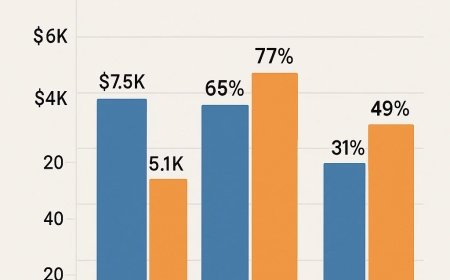Device ID Advertising Canada: Privacy and Trends
Device ID advertising Canada utilizes technologies like cookies, log files, and web beacons to track information.

Device ID advertising Canada has pioneered online marketing with the facility of targeting users with pinpoint precision through unique device identifiers. This strategy enables organizations to offer personalization of ads based on consumers' behaviours, such as web surfing or app usage, and is extremely effective. Increasing privacy concerns and tight laws in Canada like PIPEDA and Quebec's Law 25 are shifting the application of this technology by advertisers. This article explores the mechanics, privacy concerns, and surge in trends for device ID advertising Canada.
What is Device ID Advertising?
Device ID advertising Canada is a digital marketing strategy that utilizes unique identifiers assigned to mobile devices, such as smartphones or tablets, to show targeted ads. These IDs, like Apple's IDFA or Google's Advertising ID, allow advertisers to track user behaviour on websites and apps. In Canada, this approach has become increasingly popular because it is so accurate for reaching targeted audiences. But it's concerning from the user's perspective, as this data can track browsing behaviour, app use, and location.
The appeal of device ID Canadian advertising is that it is able to provide personalized ad experiences. For example, if a user is searching for Toronto cafes this user may be shown local coffee shop ads. The level of targeting promotes engagement but needs to be monitored well in order to prevent infringement of privacy laws.
Privacy Laws in Canada
Canada has strict privacy laws for device ID advertising Canada. The Personal Information Protection and Electronic Documents Act (PIPEDA) sets guidelines for the collection and use of personal information, such as device IDs. Quebec Law 25, effective from September 2024, has stricter demands, including express user consent to data collection.
Key privacy provisions are:
- Transparency: Users must be notified about data collection practices.
- Consent: Users should be able to opt-in or opt-out of tracking.
- Data Security: Data should be stored securely to prevent breaches.
- User Rights: Canadians can make a request for data access or deletion.
Non-compliance will yield hefty fines, and therefore advertisers need to stay up to date with regulation. For instance, a 2024 privacy notice stressed the need for clear data practices in digital advertising.
How Device ID Advertising Works
Device ID advertising Canada utilizes technologies like cookies, log files, and web beacons to track information. The device ID will recognize a user after they interact with a website or application and recognize actions, such as a click or buy. The advertisers utilize it to build user profiles for targeting. A retailer can utilize device IDs, for example, to show ads for winter coats to users from cold regions of Canada.
But when device IDs are combined with other personal data, like names or addresses, privacy concerns arise. Google policies, for instance, prohibit using advertising IDs along with identifiable information to protect users.
New Trends in Device ID Advertising
The device ID advertising Canada climate is evolving with growing privacy demands and the evolution of new technology. Some of the most significant trends are:
- Privacy Sandbox: Google is swapping traditional device IDs with anonymized signals, offering less tracking but still enabling ad targeting.
- AI-Driven Advertising: AI is used to analyse device ID data for more control-based, intelligent advertisements without breaching privacy regulations.
- Greater User Control: Apps now have features that enable resetting or disabling advertising IDs so that users have more control of their information.
- Alternative IDs: New types of IDs, probabilistic IDs, are emerging to balance ad effect and privacy
All these trends are a step toward ethically responsible advertising, driven by consumer privacy demands and regulatory changes.
Challenges and Best Practices
Although device ID advertising Canada is successful, it has drawbacks. Users are more cautious about tracking, and almost half of Canadian internet shoppers have concerns regarding data privacy. Advertisers need to weigh personalization against user rights respect.
Best practices are:
- Provide transparent opt-outs, such as the Digital Advertising Alliance's offering.
- Utilize secure storage of data to avoid breaches, as in cases like the McDonald's AI bot hack.
- Constantly updating privacy policies to conform with laws like PIPEDA and Law 25.
Conclusion
Device ID advertising Canada has robust potential for direct marketing but calls for delicate navigation of consumer rights and privacy laws. By encouraging open practices and embracing new technologies, advertisers can succeed at reaching target audiences with due respect for user rights. For businesses looking to succeed in this environment, working with experts like Skymattix helps navigate compliance and successful results.








&srotate=0)



























